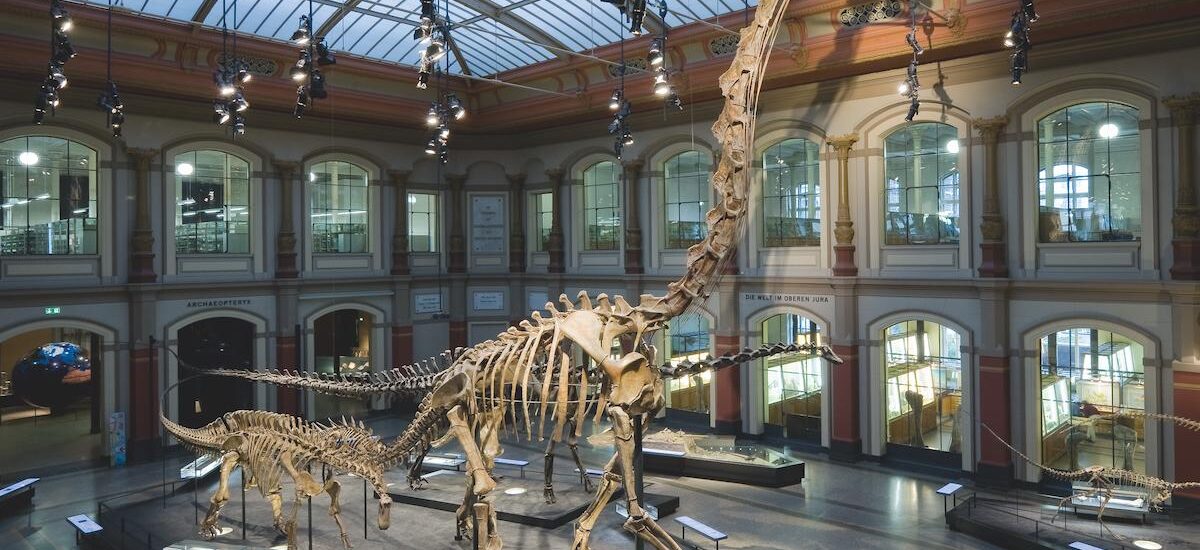Welcome to the Museum für Naturkunde Berlin, a historic institution that stands as a testament to the evolution of natural history and science over the centuries. As you step into this grand building on Invalidenstraße, you are entering a space that has been a cornerstone of scientific exploration and public education since its establishment.
The museum’s origins can be traced back to 1810, when it was founded as part of the Friedrich-Wilhelms-Universität, now known as Humboldt University of Berlin. This was a time when Berlin was emerging as a hub of scientific thought, and the museum was conceived to house the vast collections that were beginning to overflow the university’s main building. By 1880, these collections had grown so significant that a dedicated space was required, leading to the construction of the current museum building, officially opened by Emperor Wilhelm II in 1889.
Over the years, the Museum für Naturkunde has been at the forefront of scientific discovery. In the early 20th century, it became home to one of the largest dinosaur skeletons in the world, the Giraffatitan, unearthed from the Tendaguru beds in Tanzania by German paleontologist Werner Janensch. This towering skeleton remains a highlight of the museum and is a vivid reminder of the adventurous expeditions that brought such treasures back to Berlin.
The museum has also played a critical role during tumultuous times. It was the first museum in Berlin to reopen after World War II, despite suffering significant damage during the conflict. The East Wing was destroyed, but the resilience of the staff and the preservation of 75% of the collection allowed the museum to continue its mission of education and research.
In the decades following the war, the museum expanded its reach, conducting research expeditions to Cuba, Mongolia, and the Soviet Union. These efforts have contributed to the museum’s status as one of the most important research institutions in the world, with partnerships in over 60 countries.
Notable figures have walked these halls, from pioneering scientists to artists who have drawn inspiration from the museum’s collections. The museum has been a canvas for artistic interventions, with contemporary artists like Mark Dion and Ulrike Haage exploring the intersection of art and science through their work displayed here.
Today, the Museum für Naturkunde is not just a repository of the past but a vibrant center for the future of scientific inquiry. Its collections, numbering over 30 million specimens, provide invaluable insights into the history of our planet. The museum continues to evolve, with plans for expansion that include a second location in Adlershof, ensuring that its treasures can be preserved and shared with future generations.
As you explore the Museum für Naturkunde, you are not just witnessing the history of natural science; you are part of an ongoing dialogue about the future of our planet. From the towering dinosaurs to the tiniest insects, each exhibit tells a story of discovery, resilience, and the relentless pursuit of knowledge. Whether you’re visiting in person or virtually, the museum invites you to join in this exploration, sparking curiosity and understanding about the natural world and our place within it.




